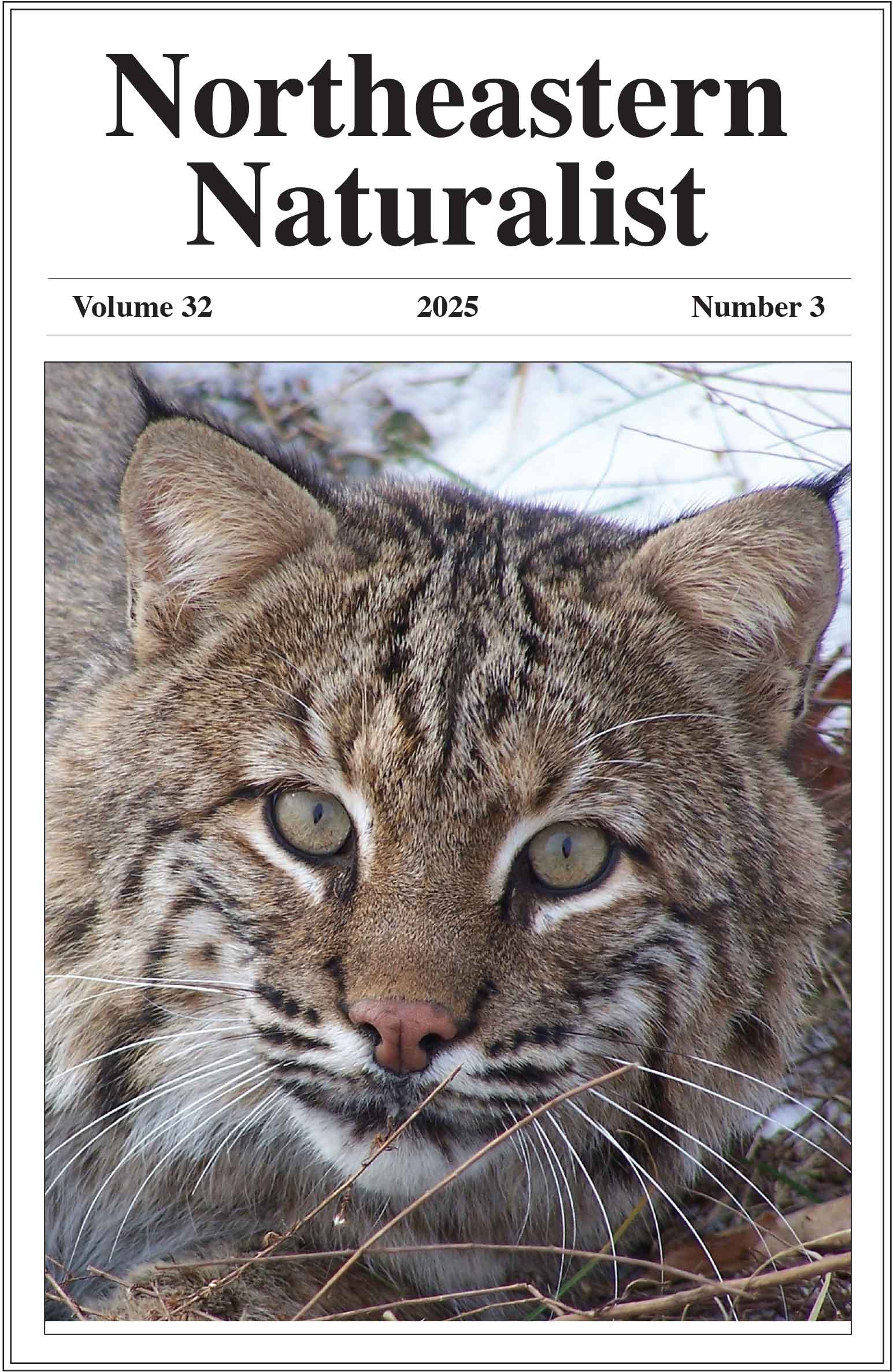Hypogeous, Sequestrate Fungi (Genus Elaphomyces) Found at Small-mammal Foraging Sites in High-elevation Conifer Forests of West Virginia
Corinne A. Diggins1,*, Michael A. Castellano2, and W. Mark Ford3
1Department of Fisheries and Wildlife Conservation, Virginia Polytechnic Institute and State University, Blacksburg, VA 24061. 2US Department of Agriculture, Forest Service, Northern Research Station, Corvallis, OR 97331.3US Geological Survey, Virginia Cooperative Fish and Wildlife Research Unit, Blacksburg VA 24061. *Corresponding author.
Northeastern Naturalist, Volume 27, Issue 3 (2020): N40–N47
Abstract
Little is known about hypogeous, sequestrate fungi (i.e., truffles) in the eastern United States. Since the fruiting bodies of these fungi are part of the diet of multiple rodent species, filling data gaps is important to understanding more about truffle species distribution and habitat associations. During a microhabitat study on radio-collared Glaucomys sabrinus fuscus (Virginia Northern Flying Squirrel) in 2013, we opportunistically sampled truffles at small-mammal digs and scratches within our microhabitat plots. All sampling was conducted within known squirrel-foraging home ranges. We found 3 Elaphomyces species: E. macrosporus, E. verruculosus, and E. americanum. Our observations of E. macroporus are the first from West Virginia. Herein, we describe the microhabitat associations for each fungal species. We suggest using small-mammal digs and scratches as potential indicators to opportunistically gather more information on truffle species in coniferous forests of the eastern United States.
![]() Download Full-text pdf (Accessible only to subscribers. To subscribe click here.)
Download Full-text pdf (Accessible only to subscribers. To subscribe click here.)
Access Journal Content
Open access browsing of table of contents and abstract pages. Full text pdfs available for download for subscribers.
Issue-in-Progress: Vol. 32(4) ... early view
Check out NENA's latest monograph and Special Issue:













 The Northeastern Naturalist is a peer-reviewed journal that covers all aspects of natural history within northeastern North America. We welcome research articles, summary review papers, and observational notes.
The Northeastern Naturalist is a peer-reviewed journal that covers all aspects of natural history within northeastern North America. We welcome research articles, summary review papers, and observational notes.